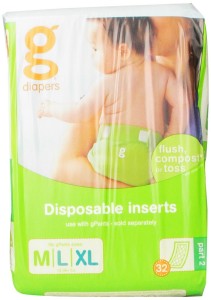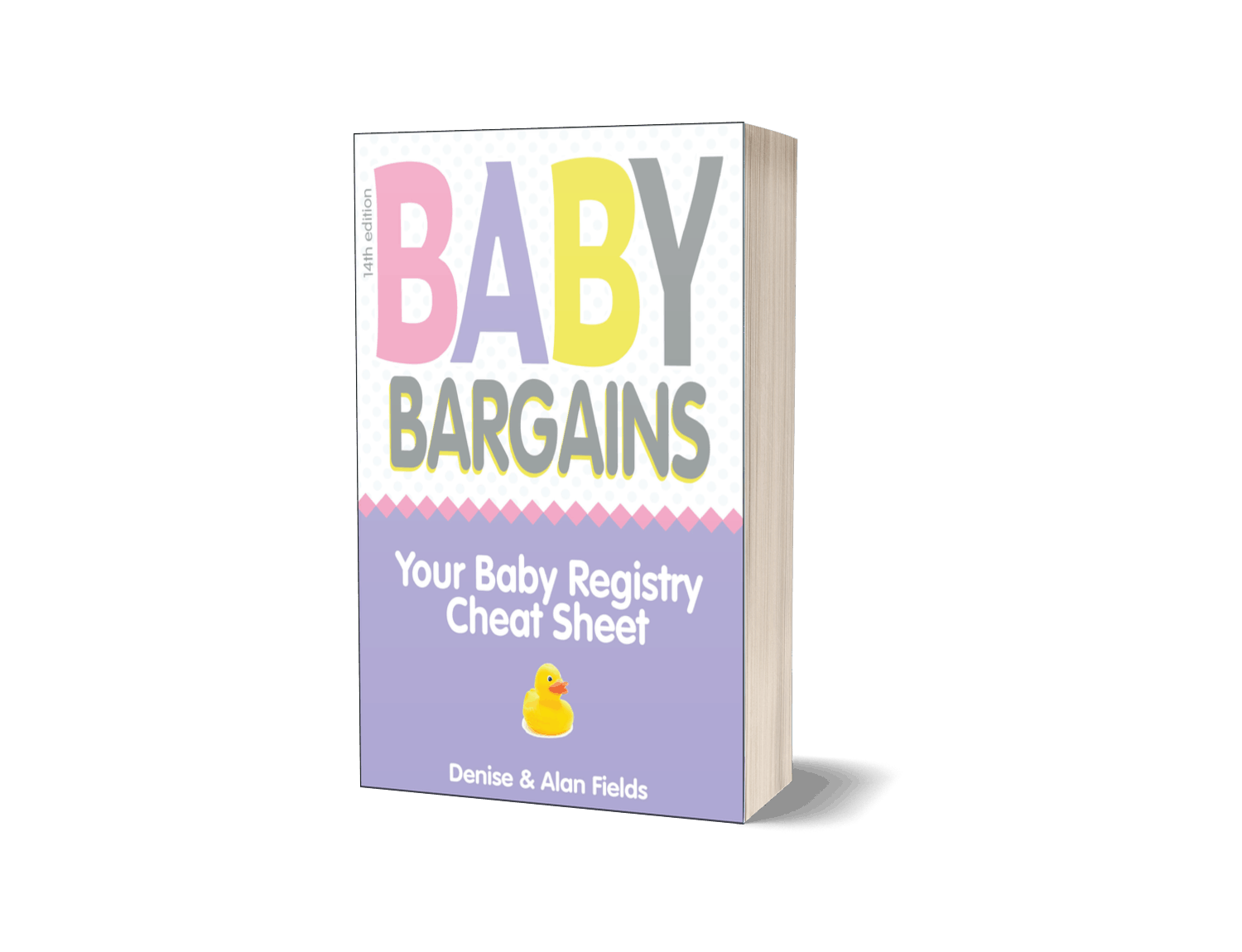
A gDiapers Try Me Bundle starter kit comes with 2 reusable small sized gPants and 20 biodegradable inserts for $35 on BabiesRUs.com. Once you are ready to dispose of the inserts, you have a choice: flush them, compost the wet diapers or throw them in the garbage. GDiapers notes you never compost a poopy diaper, only flush it. But what about throwing them out? Isn’t that the same as disposables? Not necessarily since there is no plastic in gDiapers, so they degrade fast (supposedly 50 to 150 days) . . . if you don’t put them in a plastic trash bag, of course.
GDiapers’ web site has several videos showing their product at work. And we’ve heard from several moms who love this idea. It is a nice compromise in the cloth versus disposable debate. One caveat: you’ll find gDiapers aren’t as absorbent as disposables, simply because they use only wood pulp (fluffed for extra absorbency) rather than that super absorbent gel in most diapers. Price is probably the biggest stumbling block with gDiapers. Additional washable “little g” pants range from $18 to $25. Inserts start at $13.29 each for a 40 pack of the small size–that’s 33¢ per insert. Ouch! That’s more than twice the price of disposables when bought at discount stores! You can also buy reusable snap-in liners, $27 for six.
Parent reviews are mixed with the disposable inserts. Many thought they worked well for pee, but poopy diapers often stained the cloth diaper and liner. And the whole point of being able to flush them is moot if you aren’t near a toilet. Finally, cost is a big factor here. When the insert costs more than a regular disposable diaper, parent have ask, what’s the point?
Ultimately, while these products are promising options for parents looking for a natural alternative to mainstream disposables, the price of all these options severely limits their popularity. And there is still an issue of where these diapers will go. Until recycling centers with composting options become more widely available, there’s a question as to whether these diapers won’t still end up buried under tons of earth and trash waiting to decompose. Rating: B

 We obsess over gear for families . . . so you don't have to. Baby Bargains has one mission: help you find the best gear for your family and home with unbiased reviews by experts with 20 years of experience. At prices that don't break the bank. When you purchase a product from links on this site, we make a small affiliate commission. Learn more
We obsess over gear for families . . . so you don't have to. Baby Bargains has one mission: help you find the best gear for your family and home with unbiased reviews by experts with 20 years of experience. At prices that don't break the bank. When you purchase a product from links on this site, we make a small affiliate commission. Learn more 
